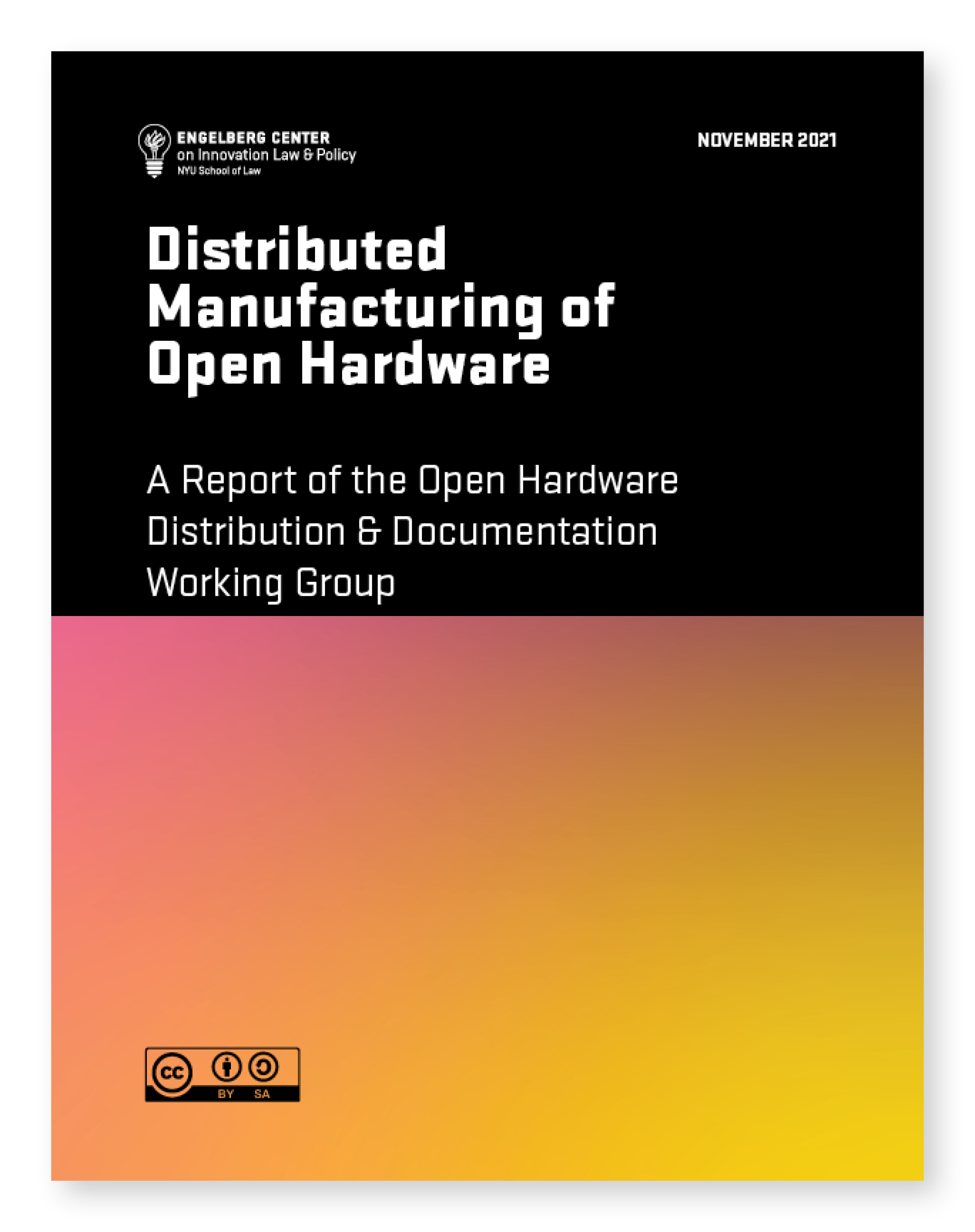Distributed Manufacturing of Open Hardware
Open Hardware Distribution & Documentation Working Group
Open hardware regularly showcases the power of open, distributed design. From emergency response to innovative electronics to complex machines, time and time again geographically distinct communities have come together around a shared set of challenges to iteratively design hardware to meet their collective needs. These open designs continue to improve through collective collaboration, adapting to meet specialized or specific needs.

Open hardware regularly showcases the power of open, distributed design. From emergency response to innovative electronics to complex machines, time and time again geographically distinct communities have come together around a shared set of challenges to iteratively design hardware to meet their collective needs. These open designs continue to improve through collective collaboration, adapting to meet specialized or specific needs.
With notable exceptions, the promise of the distributed manufacturing of hardware has been harder to realize. While designing hardware can largely happen in a virtual space, manufacturing hardware requires components to be procured, assembled, tested, and distributed in the physical world. Once that hardware is created, it often needs to be supported as its user base extends beyond the original creators and community members willing to assemble the hardware from scratch. Manufacturing at scale can require more formal, dedicated infrastructure that often exceeds the capabilities or interest of the original design community. As a result, however large the design communities involved, many of the most successful open hardware projects have been manufactured by a much more concentrated set of entities.
Nonetheless, the ability to manufacture and distribute locally is key to unlocking the full potential of open hardware. Local manufacture and distribution makes it easier for hardware to reach specific markets, and to be customized for local needs. It can also help to bring open hardware beyond its original design community to larger audiences.
1
Open Hardware or Open Source Hardware is one model of technology transfer and development where designs for hardware are shared openly for anyone to freely use, modify, and commercialize. The Open Source Hardware Definition states in part: “The hardware’s source, the design from which it is made, is available in the preferred format for making modifications to it […] Open source hardware gives people the freedom to control their technology while sharing knowledge and encouraging commerce through the open exchange of designs.”
1
The global response to the COVID crisis vividly illustrated the potential of the distributed manufacture of collaboratively created open designs. Objects such as Personal Protective Equipment (PPE) were refined by global networks and then manufactured and distributed by local (often volunteer) networks. While inspiring, this example is still more the exception than the rule
